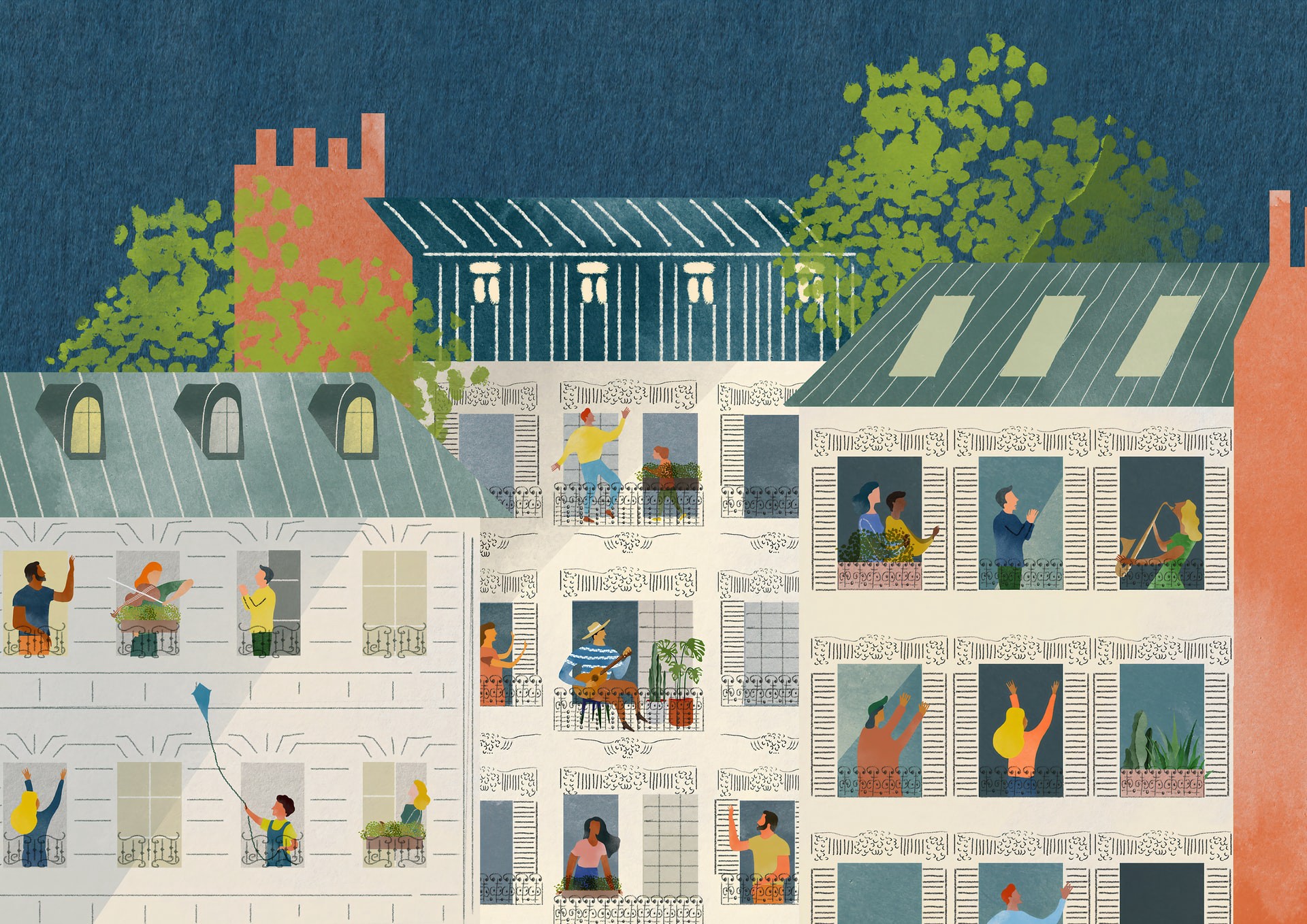What are the challenges and benefits of extending the life of our clothing?
The wikipage input value is empty (e.g. SomeProperty::, [[]]) and therefore it cannot be used as a name or as part of a query condition.
Desire for the new newer newest
Where does this desire of consistently wanting new clothes come from? In a consumerist society, people are trained to find fast fashion pleasurable and addictive (6). In 2007 scientists at Stanford MIT and Carnegie Mellon investigated this addictiveness of clothing with FMRI technology. As it turned out, the "pleasure centre" in the brain is overactive when people are hunting for bargains. This pleasure centre is also called the "nucleus accumbens", and it plays an important role in positive experiences such as desire, motivation, passion and satisfaction. Consumers run the risk of ending up in a kind of hedonistic circle where they want to buy stuff over and over again. If this is not possible they will feel empty and unhappy. (5) How much we value our clothing has also dropped significantly, both financial and emotional. For example, fashion historian Philippe Perrot describes that a workers in early nineteenth-century in Paris usually owned one shirt for which he had to work for a month. He cherished this shirt, mended it when it tore, and guarded the shirt with his life when he slept in inns. After all, clothing was one of the most expensive personal belongings of man.(7) Nowadays clothes have become a throw away product. In todays fast fashion stores like H&M and Primark you can buy a t-shirt for the price of a hamburger. This makes it very easy to consume huge amounts of clothing to get this feeling of belonging. Our desire to always look fashionable or the shame when we look old-fashioned is an important motivation to keep buying new clothes and get rid of our old ‘out of style’ clothes (7)
Planned obsolescence & trends
Fast fashion is also characterized by poor quality. Not surprising, when you consider that the employees in textile factories have to process about 100 items of clothing per hour. The fact that fast fashion does not last long is not only a result of fast - and therefore cheap - production, but also because garments that easiliy get damaged. According to Marieke Eyskoot, an expert in the field of sustainable fashion and lifestyle, this process is called planned obsolescence. By consciously designing clothing for a short life, fast fashion brands encourage the disposal and replacement of clothing.(8) The fashion industry also uses time as a means of power. It decides when something is ‘in’ or ‘out’ of fashion, the industry thus rules the minds and purses of consumers. (7) The World Resource Institute reports that “the number of fashion seasons has increased from two a year” to as many as “50- 100 microseasons”(10) New trends that come out every week aim for us to buy as much clothing as quickly as possible. This fashion calendar, in which new looks are created every week, was deliberately set up by these companies to make the customer feel off-trend after just wearing it once. (9) And just like that the clothing items have expired.
Individual changes
Many changes needed to make clothing have a longer life have to be implemented by the manufacturers and big companies that control the fashion industry. But as consumers it is important that we are aware about this expiration date of clothing. The changes we all make in our behaviour not only add up, but can drive change in the industry. So as consumers, we have responsibilities as well as rights. In particular, we need to recognize the cumulative effect of our acts as individual consumers (11) We have to develop a deeper appreciation of the things, which we own, fostering a culture of reusing and repairing. Like design academic Ezio Manzini says: “Today we live in a world of objects of rapid consumption. Objects, which perform their service requiring minimum effort and minimum attention, but also objects, which pass us by without leaving any lasting impression in our memory. A disposable world made to require no effort, but which, at the same time, produces no quality. Imagine now a garden with some flowers and some fruit trees. Think of the attention, time and energy that are required and think of its products. Those flowers and those fruits, and the person who made them grow, do not have a measurable value in banally economic terms. Certainly the garden must produce flowers and fruits, but the person dedicated to this, does it for a more general reason: he/she does it because he/she loves plants. Try now to imagine an analogous relationship with objects. Think of some objects that are as beautiful and useful as a tree in a garden: objects that would last and would have a life of their own. Objects that, as a tree, would be loved for how they are and what they do. Objects that would render a service and would require tending”(12) That is quite interesting, because what if our clothes were living things that we need to take care of? Clothes provide you warmth, make you feel or look the way you want to and in return you need to take good care of them. It implies a new ecological sensibility: taking care of objects can be a way of taking care of that much larger “object” which is our planet (12).
Act of Mending
One way of taking care of our clothes is by mending. Mending is activism. It sends a message that we care about reducing waste and minimizing our environmental impact that we don’t need to buy into trends or buy anything at all, really. When you take care of your clothes and mend them, you can keep them out of the landfill for longer, and reduce the amount of clothes you go through over time. Mending is a way of repairing clothes that have holes, stains, or other signs of wear to make them more useful and beautiful. It’s about using what you have, embracing imperfections, fixing what’s broken, and rejecting the idea that newer is better. For example: a colourful patch on top of a rip in your jeans, or an embroidered design on top of a coffee stain. It’s meditative, slow work. It’s productive, and deeply satisfying. Mending is a rejection of the kind of capitalism that puts profit before the planet. We care enough to invest our time into fixing what we have, and to embed something deeply personal into it (13).
Swapping and renting
There are also alternative ways to get new clothes without buying them like swapping or renting. Swapping is a circular economy model, gaining in popularity of late, means that getting that new wardrobe just became more sustainable. Why buy something new when you can swap something you no longer wear for an item that needs a new home? (10) Renting instead of buying is also an option. At LENA library they offer an alternative to consumer-based and environmentally damaging retail, allowing shoppers to have their cake and eat it too. Shoppers can borrow vintage clothing for a monthly subscription (14).
Role of big brands
Across the EU, there is a right to repair on white goods, meaning that manufacturers of goods like washing machines and refrigerators are obliged to fix or provide spare parts for any units which break down for up to ten years. Imagine if we applied the principle of this legislation to clothing manufacturers, meaning that brands were obliged to help you repair and restyle clothes, rather than encouraging you to throw them into the bin and pick the shopping basket back up. With for example repair stations in shops where you could follow workshops in repairing, restyling and up cycling. You bring people together by learning new crafts (15). Clothing brand Patagonia already encourages its customers to repair their old outdoor clothing instead of buying brand new stuff. This includes offering free clothing repairs to extend the life of its garments (16). A lot more big brands could encourage to repair, but repairing strokes with their fast fashion model so that probably will not happen soon. So does the change need to come from us as consumers or is there a role for designers here?
Role of designers
Designers can have a big impact in finding ways in how we can extend the life of our clothes. Take the project ‘Tracing a lifetime’ from Sunniva Rademacher Flesland. By focusing on extending the lifetime of our clothes by the simple means of repairing (for example small damages like holes, stains or broken seams), we can eliminate all those steps of a new production cycle, and reduce the amount of waste we generate (17).
Designers can also have a big impact in how we produce our clothing and thereby create clothing with a longer lifespan. Take Vera de Pont who makes seams unnecessary in her multifunctional Pop-Up design. The design consists of a large piece of fabric with five design lines. The wearer can determine how the item is worn, simply by following the chosen pattern with scissors. In this way, the user can make the garment their own. This approach makes it more efficient for the designer to produce, because multiple design options can be processed per item. The design is available in a screen-printed and woven version.
Another project is COLLECT collaboration between the designers Lisa Konno and Karin Vlug. With the collection, the designers make a statement against over-consumption in the fashion industry and explore innovative production methods. COLLECT is a multi-functional collection that gives you the freedom to completely adapt the design to your wishes. By means of a handy DIY system you can also make a jumpsuit or a dress from a basic shirt. In this way, Konno and Vlug encourage us to see the way we handle our clothing from a different perspective. When part of the garment gets damaged, you don't have to throw the entire garment away, but you can easily replace a small part. In this way you are much more aware of your clothes (18)
Conclusion
So were can the most impact of extending our clothes be found? At the individual, the big brands or is there a big role for designers? There so many things in the world that need fixing and a lot of them seem beyond our control, like changing the fast fashion industry. It is almost impossible which can feel a bit depressing. But I think that with starting where we are and what we can do, it can help us feel less powerless. I also see a big role for designers who can help fight against the industry with their ideas and also inspire consumers. With our project TenMinsteHoudbaarTot we want to the show that as individuals we all can do something, no matter how small the act is. When you add up a lot of small individual changes, they add up to big change. Our project is also a stand against the fashion industry about the expiration date they created
Sources
1. De Bijenkorf. ‘Jaarlijks belandt 145 miljoen kilo kleding bij het restafval’. Web. 12 december 2020. https://www.volkskrant.nl/nieuws-achtergrond/jaarlijks-belandt-145-miljoen-kilo-kleding-bij-het-restafval~b7c41d8e/
2. De Standaard. 19 juli 2018. ‘Burberry vernielt elk jaar miljoenen producten: ‘Dit is het donkerste geheim van de mode-industrie’’. Web. 12 december 2020. https://www.standaard.be/cnt/dmf20180719_03623646
3. Celie, Yildiz. 16 oktober 2017. 'H&M verbrandt jaarlijks 12 ton nieuwe kleding'. Web. Web. 11 december 2020. https://www.ad.nl/binnenland/henm-verbrandt-jaarlijks-12-ton-nieuwe-kleding~a393594c/
4. Wrap. 5 december 2015. Extending the Life of Clothes. Web. 11 december 2020 http://www.wrap.org.uk/content/extending-life-clothes
5. Van der Ven, Annemarie. ‘Fast Fashion onder de loep: waarom kopen we zo massaal?’. Web. 11 december 2020 http://www.enfait.nl/fast-fashion-onder-de-loep-waarom-kopen-we-zo-massaal/
6. Ro, Christine. 11 maart 2020’ Can fashion ever be sustainable’. Web. 12 december 2020 https://www.bbc.com/future/article/20200310-sustainable-fashion-how-to-buy-clothes-good-for-the-climate
7. Charlie. 11 maart 2019. ‘Charlie checkt: waarom kopen we zoveel kleren?’. Web. 11 december 2020 https://www.charliemag.be/wereld/fast-fashion/
8. Aniek. Voor de wereld van morgen. ‘Fast fashion: zo laat je je niet verleiden’. Web. 12 december 2020 https://www.voordewereldvanmorgen.nl/artikelen/zo-houdt-de-modewereld-fast-fashion-in-stand
9. Pure Sportswear.’Vijf schokkende kenmerken van de fast fashion industrie’. Web. 12 december 2020 https://puresportswear.nl/vijf-schokkende-kenmerken-fast-fashion-industrie/ 10. Euronews. ‘why clothes swaps could be the antidote to fast fashion’. Web. 12 december 2020 https://www.euronews.com/living/2019/11/07/why-clothes-swaps-could-be-the-antidote-to-fast-fashion
11. Muis, Henk. Eternally Yours. Nederland. The authors and 010 Publishers. 1997. PDF (Print)
12. Changedesign. ‘The Garden of objects, designing for a world to take care of.’ Pdf. 12 december 2020 https://www.changedesign.org/Resources/Manzini/Manuscripts/The%20Garden%20of%20objects.pdf
13. Fulop, Lily, 31 maart 2020. ‘It’s A Great Time To Learn How To Mend Your Clothes’. Web. 12 december https://www.refinery29.com/en-us/2020/03/9626879/benefits-of-mending-clothes
14. Iamsterdam. LENA fashion libary. Web. 13 december 2020 https://www.iamsterdam.com/en/see-and-do/shopping/overview-clothes-shops/lena-fashion-library
15. Womack Amelia. 18 februari 2020. ‘Fashion brands should be obliged to help you repair what you wear – it will help tackle the climate crisis’. Web. 13 december 2020 https://www.independent.co.uk/voices/climate-crisis-fast-fashion-clothes-repair-london-week-a9342871.html
16. The Fashion Law. 27 december 2018. ‘The Future of (Sustainable) Fashion is Not About Buying, It’s About Renting’. Web. 13 december 2020
17. Sunniva Rademacher Flesland. Tracing a lifetime. Web. 12 december 2020. https://sunnivarademacherflesland.com/TRACING-A-LIFETIME
18. De Vries, Maysa. 18 juni 2017. ‘5 x ontwerpers die van mode-productie een open source proces maken mét een gesloten cirkel’. Web. 12 december 2020.
Links
CONTRIBUTE
Feel free to contribute to Beyond Social.














